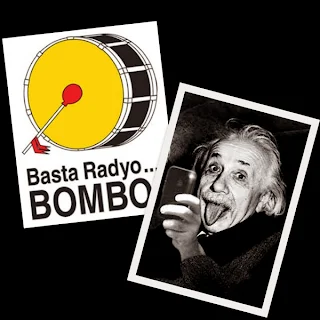Recently, I have observed two words that have entered our modern lexicon, both of which merit some discussion and perhaps, appreciation.
Consider the first one: selfie. Announced by Time Magazine as one of the top 10 buzzwords for 2012, “selfie” refers to any self-portrait photograph—taken by the subject himself or herself with the use of a modern technology gadget like a cellular phone, tablet, or just about any portable camera; and later uploaded on Facebook, Instagram, Pinterest, or any other social networking site.
 Writing for the BBC news magazine online, Charissa Coulthard says that, owing to the fact that this type of photos has been flooding social media sites in recent months, “selfie” has become commonplace enough to be monitored for inclusion in the online version of the Oxford English Dictionary. Coulthard reports that a search on Instagram retrieves over 23 million photos uploaded with the hashtag #selfie, and a whopping 51 million with the hashtag #me.”
Writing for the BBC news magazine online, Charissa Coulthard says that, owing to the fact that this type of photos has been flooding social media sites in recent months, “selfie” has become commonplace enough to be monitored for inclusion in the online version of the Oxford English Dictionary. Coulthard reports that a search on Instagram retrieves over 23 million photos uploaded with the hashtag #selfie, and a whopping 51 million with the hashtag #me.”
Further, one selfie alone posted by one of my FB friends as her Profile Picture elicited some 90 Like!s from all her friends from across the world. What can be more amazing than that?
But among others, selfie serves some purpose. Upon the very act of posting one’s own picture online, the subject flings himself or herself open to public examination. Because the self becomes the subject of public scrutiny, judging from the likes and comments that the post elicits or draws out from other Internet users, he or she can be made aware of their own charm, or the lack of it.
And if one selfie elicits many reactions, with some of them even citing certain aspects of the photo or features of the subject, the whole exercise can guide the person which of their characteristics can be considered desirable—and which cannot.
The concept of selfie then rises beyond vanity, or some penchant to take pride in and parade one’s own beauty. In a sense, the selfie is able to relay back to the subjects not only how they look good to others but how else they can look better.
The entire online exercise—from choosing which picture to post to enhancing them using software applications to actually posting it to eliciting reactions from others—allows for self-examination and even introspection.
Then, there is the other word—“Bombo” or “bombo,” functioning both as noun and verb—which I suppose has already been a household name long time ago.
In the provinces and cities across the country, the Bombo Radyo by the Florete Group of Companies from Iloilo has permeated the public consciousness owing to the presence of their radio stations across some 20 major provinces in the archipelago.
Through the years, Bombo Radyo has staged commentators and announcers for their news and public affairs department who have criticized on air practically almost everyone whom they consider misbehaving, errant or corrupt both in private and public spheres.
Virtually, the Bombo programs have gained notoriety even as its literal drum noise barrages on air—indeed, in order to parade its subject’s misdemeanors for everyone to hear. While it has gained the ire of its subjects, through time, the commentary culture it has fostered has also helped create a Filipino audience critical of social issues.
So commonly nowadays you would hear how one public figure or even an entirely anonymous person literally “figured in public” because “na-Bombo siya,” meaning—his or her name was mentioned in the Bombo Radyo commentary program), which also means he or she figured in some scam, scandal or anomaly.
During Bombo Hanay or similar commentary programs, the commentator host raises a particular issue that primarily concerns the public, presents the allegedly errant personalities or officials and then, basing on reports of malfeasance, strips them bare to the bone.
Their accuracy or observance of media ethics notwithstanding, these and the counterpart commentaries in other radio networks keep the public officials and other social leaders in check even as they do not only examine the issue but also more than scrutinize the behavior of the personalities involved.
It is always best to attack the issue as the case in point. At times, however, the verbal criticisms on the radio become vitriol, cannot help but do so “below the belt,” because the host can hardly separate the issue from the personality involved.
As such, the word Bombo performs a function similar to the one delivered by selfie. Through this, Bombo keeps its subjects in check and makes them aware of themselves. And by doing so, the media involved is virtually holding up the mirror of the community to its own constituents to make them see the ills of their own society. Such has always been the mandate of the fourth estate.
In this sense, both “selfie” and “Bombo” subject the personalities or persons to be judged per se; and both forms of criticism create avenues to critique the self, and how it can do better or be better.
While this parallelism may appear new, the thing about self-criticism is not new all. Not surprisingly, such concepts elicited by both words had already been pondered ages and eons ago, particularly by the Greek Socrates, who said: “The unexamined life is not worth living,” or something to that effect. Trite but true; so trite but so true.






